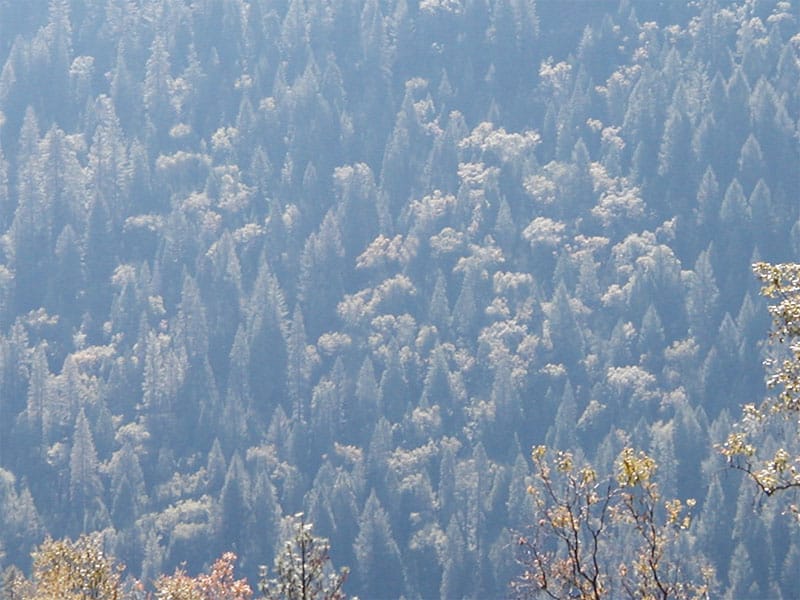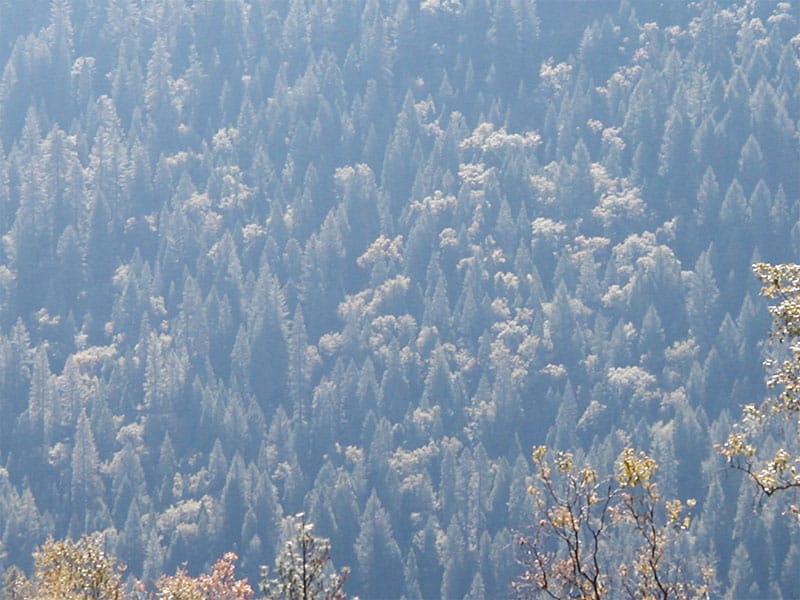I tried my hand at some “digital thinning”, with a picture of the Stanislaus National Forest, above the Mokelumne River. I couldn’t really remove as many of the bigger trees as I should, without sacrificing photorealism. I did “enhance” some of the oaks, which is a keystone of the new paradigm of ecosystem wildlife values. I am sure there are some home habitats of ESA birds, here. There would also be some pockets of undisturbed forest, and maybe some bigger openings around the oaks.
Below is the original picture
I think we can all say that there is, indeed, some excess trees to thin out, in this stand.


Larry: What is the age of the oldest conifers in comparison to the oldest oaks? My guess is that the conifers are invasive and so-called “native forest habitat” would be predominantly oak savannah 200 or 300 years ago — if so, the oak would have been a lot smaller, too. If not a conifer invasion, I’d be very curious about how this current dynamic came to be.
I counted the rings on a very large sugar pine we harvested as a hazard tree. It was over 340 years old. Trees over 30″ dbh will mostly be left, and the current overstocking of incense cedars and white firs will be addressed. The goal is increased resilience and restored forest health.
The tour of our project on the Eldorado was very positive, with former opponent, Craig Thomas (Sierra Forest Legacy), gushing over how we have fulfilled his vision of how restoration should be. He spent much of the day talking with our crew leader, while the rest of the group looked at actual units. They also compared units marked by another more experienced crew with our own recently-finished cutting unit. Our silviculturalist likes our work so much, he wants us to revisit at least one of the other crew’s units. On a negative note, there were two guys with Trout Unlimited hats who wanted to talk about another ongoing project, which I presented pictures of, a few weeks ago here. They led off with “You Forest Service are a bunch of liars!” The Ranger tried to chat with them privately but, the two were not interested in the field trip’s project. They stayed on the roads, smoking cigarettes, while the rest of the group went into the woods, especially interested in the “clumps and gaps” (to promote “edge effect”).
Thanks, Larry: The 300 – 400 year old age group is/was a really common age group throughout western Oregon and western Washington, too. Very few trees in the Oregon Coast Range have been found that are older than this cohort, and it is one of the most common old-growth age groups in both the eastern and western Cascades.
We know what happened in 1492, and how quickly new and deadly diseases traveled through the Americas between then and 1550 or so, but what happened ca. 1650, ca. 1720, and ca. 1770 that seemingly resulted in widespread forestation throughout much of the western states?
Oak in the Willamette Valley routinely become more than 500 years of age, but I have never heard of any conifers becoming that old — almost all of the latter having invaded from higher elevations in the Coast and Cascade ranges since white immigration and settlement in the 1820s, or so.